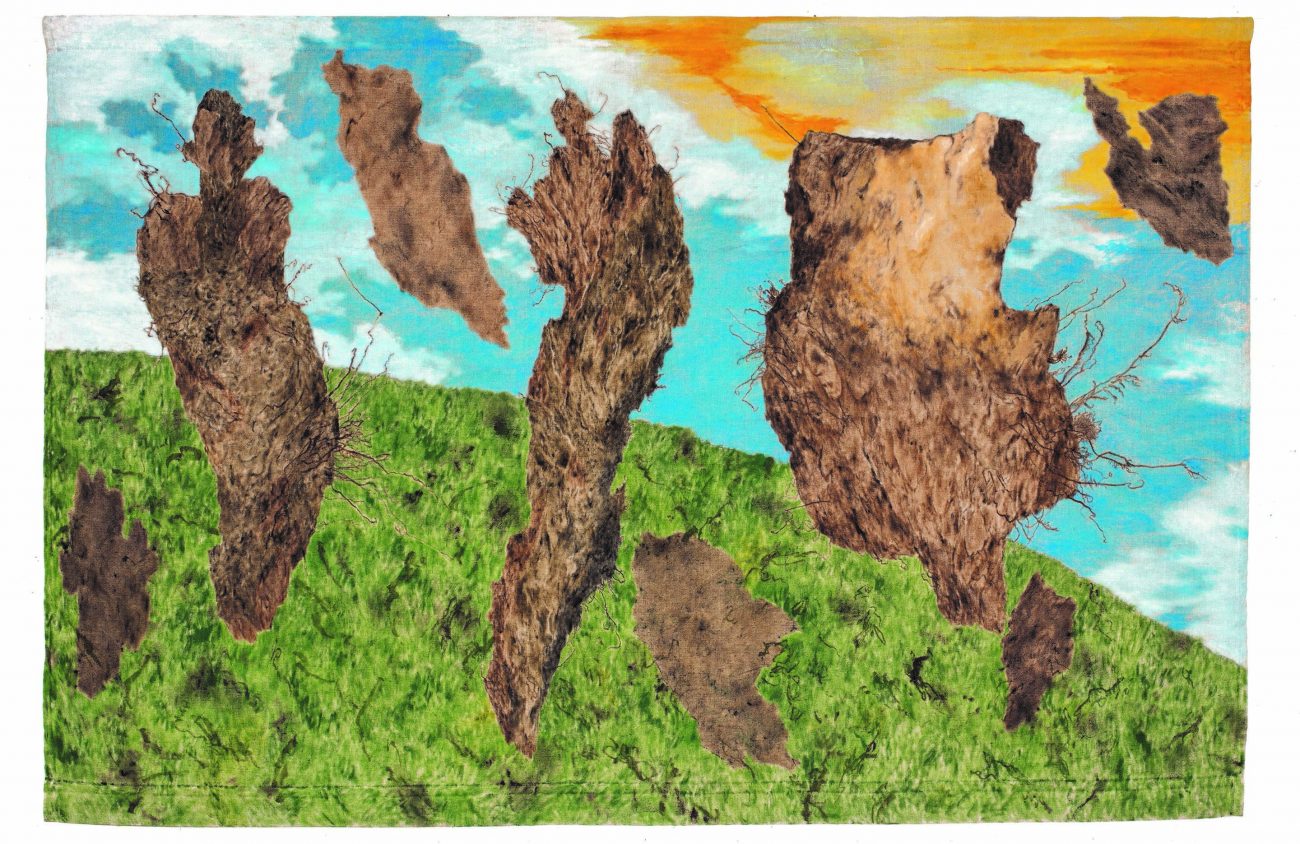After I viewed Keith Achepohl’s new exhibit Vision of Nature/Vessel of Beauty at the Jordan Schnitzer Museum of Art, I began to look at the small buds on some of the bushes in my yard at home.
I’d noticed them before, but now I wondered how far along the buds would be on April 29, the date the Achepohl show comes down. Will they be in full bloom? Wilted? Already turned brown, still hanging on to the stem for dear life? Or will they have dropped to the ground altogether?
The changing of seasons is an ordinary and expected event. You can set your clock to it — and we do. What is surprising and extraordinary about Achepohl’s work currently on view is the attention paid to these absolutely ordinary developments, the life and health and death of plants.
More than 200 pieces created in six years (2011-2017) were inspired by a Morris Graves Foundation Residency the artist spent at The Lake, Graves’ former home and studio in Northern California.
The show is organized by types of plant life: “Skunk Cabbages,” “Pond Lilies,” “Water Irises.” The bulk of the artist’s focus, however, is trees: “Forest Walks,” “Tree Maps,” “Tree Conversations,” “Forest Fragments,” and “Forest Seen(s).”
Sometimes artists spend so much time on their subject that they stray from the thing everyone else sees and make it their own. Think Van Gogh’s sky or O’Keeffe’s flowers.
This straying can be compared to improvisation in jazz or acting. The artist selects a theme — in Achepohl’s case, plants and trees — and then steps away to experiment. In art, if the experimentation goes so far that the theme is no longer recognized, the work then is called abstract.
Achepohl doesn’t go that far. He isn’t an abstract artist, though he does wander into surreal territory. “Tree Maps,” 50 graphite works on paper, show how he meanders. Some drawings are almost scientific in their detailed renderings of tree fragments, while others have taken so far off they represent worlds of their own.
Achepohl said his retreat at The Lake “was a total immersion in a place of utmost isolation and serenity. An atmosphere where one is allowed to return to a world within oneself.”
Finding yourself in nature is at the heart of this show. The graphite drawings map the way to the paintings, in particular the large-scale oil paintings hanging on raw canvas in “Tree Conversations.” The paintings in these “conversations” that are most surreal depict pieces of bark isolated from the tree, their irregular shapes floating against a background of sky.
“Forest Fragments” is a diptych, watercolor and collage on paper that looks three-dimensional, partly because of the effect of collage. Pieces of bark were, it seems, painted on paper then cut out and adhered to the underlying painting of tree trunks.
Looking at this work reminds you that Achepohl has worked primarily as a printmaker and has an affinity for paper. Yet even here, in this realistic work, the bark begins to come off the tree, going off on its own.
Representing objects outside of their original context was a signature move of the Surrealists, but Achepohl is not entirely a Surrealist, either. He fragments and isolates his subjects, relieves them of gravity, only temporarily. He always seems to return to the theme, to the tree, the lily, the iris …
Keith Achepohl’s “Vision of Nature/Vessel of Beauty” runs now through April 29 in the Jordan Schnitzer’s Barker Gallery; info at jsma.uoregon.edu.
